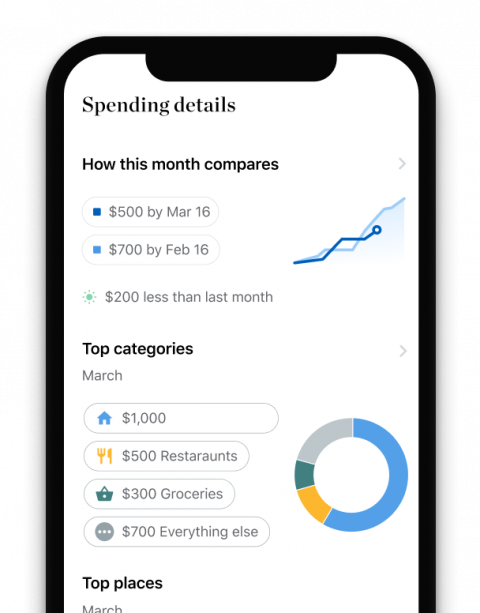How Much Does It Cost to Install Solar Panels
The rising cost of electricity from traditional sources makes solar installation seem like a no-brainer for many homeowners.
But the true cost of solar panels, and whether they'll help you save money , depends on a few key factors. On average, installation and the system together can run between $15,000 and $25,000, according to the Center for Sustainable Energy .
Location largely affects electricity rates. The national average is about 13 cents per kilowatt-hour, according to year-to-date 2021 data from the U.S. Energy Information Administration.
Before you make the leap, learn how your electric bill , location and incentives can impact your wallet over time. Here are six steps to take to determine whether you'll save more than you spend on solar panels.

1. Review your electric bill
Solar panels generate their own power and can therefore greatly offset your monthly electricity bill , if not eliminate it. The higher your bill, the more likely you'll benefit from switching. But you should note that electricity rates and usage — the main charges on your statement — are volatile.
"If a utility's electricity prices fluctuate, so could the amount of savings," says Garrett Nilsen, deputy director for the U.S. Department of Energy's solar energy technologies office. "Similarly, if energy consumption changes, the amount of savings can also vary."
Visit the EIA website to view the most recent prices per state.
2. Evaluate your sunlight exposure
More sun means more energy produced and a greater potential to save with solar. Certain states, like Arizona and California, average more sunlight hours per day.
Your home's orientation toward the sun, the amount of shade and its roof type also affect a solar system's output. You can estimate the efficiency of panels in your area by using the SolarReviews calculator . Enter your address and the average cost of your monthly energy bill.
3. Estimate residential solar panel cost
The brunt of the expense with solar panels is in installation and the purchase of the actual panels.
Minimal long-term expenses can make up for the upfront costs. "Most systems don't require much maintenance and are designed to last for 20 years or more with little change to the amount of electricity produced," Nilsen says.
When calculating the total price, consider how much energy you regularly consume — your usage is listed on your monthly utility bill — and what size system will generate the amount needed. Some tools, like the SolarReviews calculator, estimate the system size for you.
With installation, an average residential 5kW size system costs between $3 and $5 per watt, according to the CSE, which results in the $15,000 to $25,000 range. That cost is before any tax credits and incentives.
If you know your current energy usage, you can calculate how much you'll need to pay for solar panels.
Then comparison shop for solar panels as you would other big-ticket items, such as a car or TV, says Vikram Aggarwal, CEO of the solar marketplace EnergySage . Some companies lower installation costs through rebates and other programs.
Aggarwal recommends getting quotes from three to five contractors. EnergySage compiles solar companies' customer reviews, certifications, Better Business Bureau profiles and other information to help you find reputable providers.
4. Look for incentives
The government offers homeowners significant incentives for installing solar panels as an alternate energy source. For example, a residential federal tax credit allows taxpayers to claim 26% of installation costs for systems placed in service by Dec. 31, 2022. The credit dwindles to 22% in 2023 and expires starting in 2024, barring renewal from Congress.
The federal tax benefit is nonrefundable, meaning you can't get the savings in the form of a refund. Instead, you can reduce — and possibly eliminate — the amount you owe on your taxes.
Additional credits vary by location. Depending on your state, you may receive extra incentives like cash back, property tax exemption, waived fees and expedited permits. In some states, homeowners with solar panels can sell excess power to their local utility companies. Look up credits available in your state by reviewing the database of state incentives for renewables and efficiency .
But benefits aren't guaranteed to last. "As solar is becoming cheaper, state and city governments and utilities continue to reduce the kind of incentives that are available," Aggarwal says. "Incentives may actually go away and it may not actually pay to wait for too long."
5. Keep an eye on trade policy
Changes in government trade policy also impact prices. In January 2018, President Trump imposed a four-year tariff on imported solar cells and panels that started at 30% and was set to drop 5% each year until February 2022. In 2020, the tariff rate for the fourth year was raised from 15% to 18%. The tariff resulted in a 16 cent per watt increase for the average consumer in 2018, which translated to an overall increase of $960 for a six-kW system, according to EnergySage.
The cost of foreign-manufactured panels may still drop, lessening the tariff's effect over time.
6. Make the call
If you live in an area with high energy rates and a suitable solar rating and can afford the initial investment, it's worth installing solar panels in your home while the 26% tax break is in place — for the good of the environment and your wallet. But don't expect to eliminate your power bill overnight.
If you decide to purchase solar panels, shop around and search for incentives. Keep in mind that you don't have to buy solar panels — you can lease them, too. That offers a lower upfront cost, although since you don't own the panels, they won't raise the value of your home, and you may not be eligible for incentives.
Spot your saving opportunities
See your spending breakdown to show your top spending trends and where you can cut back.

How Much Does It Cost to Install Solar Panels
Source: https://www.nerdwallet.com/article/finance/solar-panel-cost